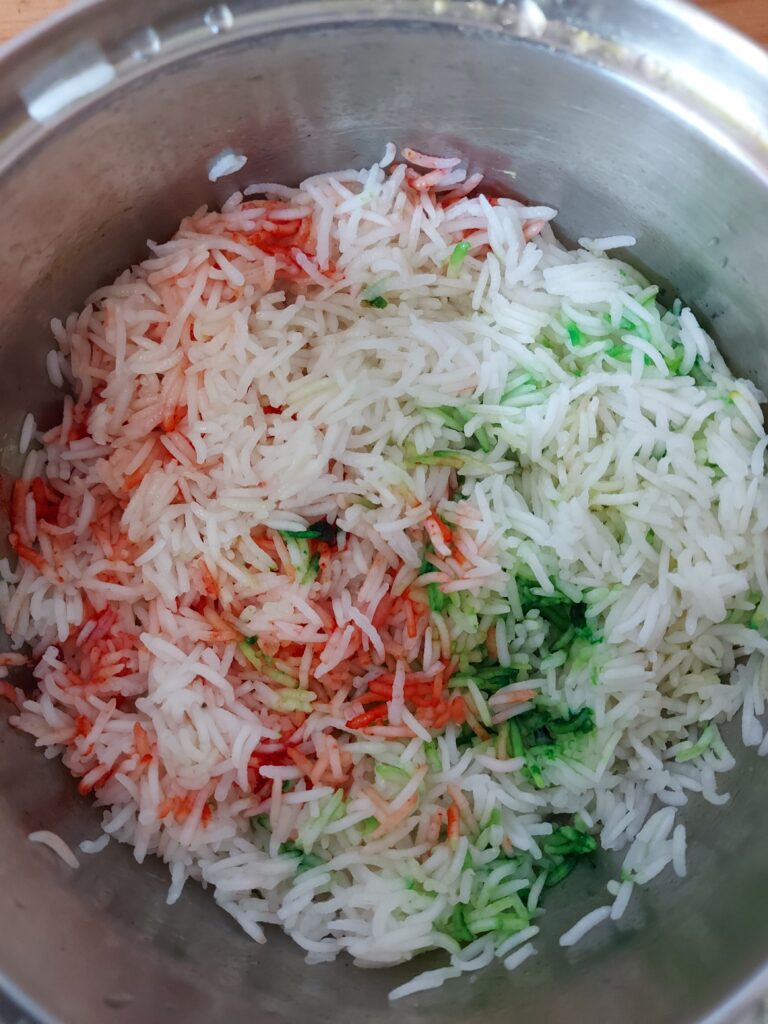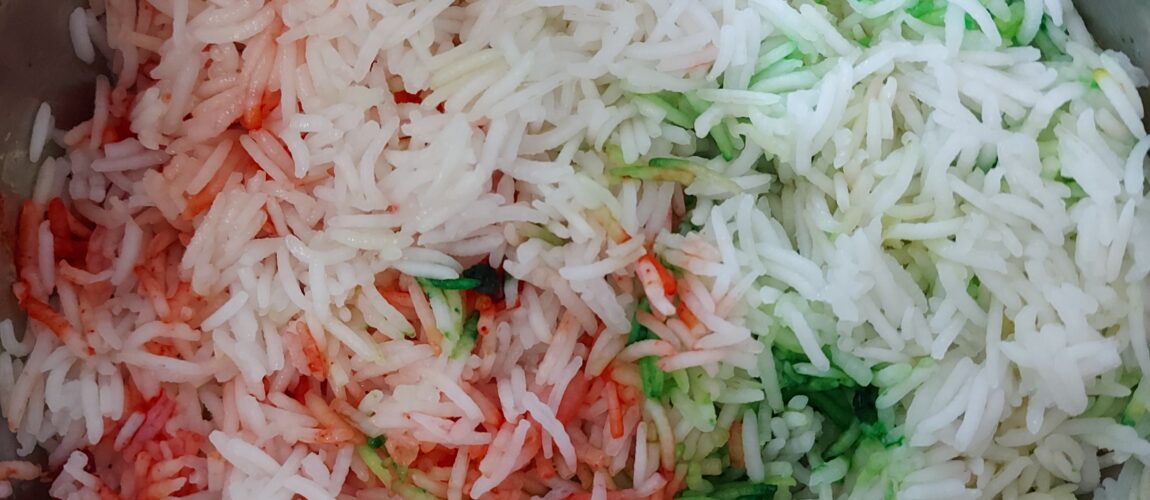
Recreating Authentic BIR Pilau Rice at Home
Every lover of British Indian Restaurant (BIR) cuisine knows the feeling from that perfectly fluffy, aromatic pilau rice or pilaf rice that arrives steaming hot, its distinct grains never clumping together, serving as the ideal canvas for a rich, vibrant curry. It’s the unsung hero of the BIR meal, often overlooked but is absolutely essential for the complete experience.
While it might seem like a simple side dish, achieving that signature BIR pilau rice texture and aroma at home can be surprisingly elusive. Forget the sticky, overcooked versions you sometimes find. We’re talking about rice where each grain stands alone, subtly fragranced with whole spices, and often boasting a delicate, inviting colour.
The good news? It’s entirely achievable in your own kitchen. With a few key techniques and the right ingredients, you can master the magic of BIR pilau rice.
What Makes BIR Pilau Rice So Special?
The defining characteristics are:
- Fluffiness: Grains are separate, light, and never sticky or gummy.
- Aroma: A subtle, gentle fragrance from whole spices that doesn’t overpower the rice itself.
- Subtle Colour: Often a light yellow or white, green and red, giving it an appetizing glow.
- Taste: Mildly savoury, slightly sweet from the spices, and perfectly seasoned.
The Essential Ingredients
You don’t need a pantry full of exotic items for this. Quality is key over quantity.
- Basmati Rice: This is non-negotiable. Always use good quality, aged Basmati rice. Its long, slender grains are naturally less starchy and cook up incredibly fluffy.
- Ghee or Neutral Oil: Ghee (clarified butter) adds an unparalleled nutty richness. A neutral oil like sunflower or vegetable oil can be used as an alternative but does not provide the same taste.
- Whole Spices: These are the heart of the aroma. Common choices include:
- Green Cardamom Pods
- Cinnamon Stick
- Cloves
- Bay Leaf
- (Optional: A few black peppercorns, a star anise)
- Onion (Optional but Recommended): A small amount of finely sliced or chopped onion adds sweetness and depth, often seen in BIR versions.
- Salt: Essential for seasoning.
- Water or Vegetable Stock: Good quality water is fine, but a light vegetable stock can enhance flavor.
- Colouring (Optional):
- Turmeric Powder: For a pale yellow hue. Use sparingly.
- Saffron Strands: For a luxurious, natural yellow-orange. Steep in a little warm water before adding.
- Food Colouring: A tiny drop of yellow or red and green food colouring for that intense BIR look.
Equipment
- Heavy-bottomed saucepan with a tight-fitting lid (crucial for steaming).
- Fine-mesh sieve or colander.
The Method: Step-by-Step Pilau Rice Recipe Perfection
This method focuses on creating perfectly separate, aromatic grains.
Yields: 2-3 servings Prep time: 20-30 minutes (mostly soaking) Cook time: 15-20 minutes
Ingredients:
- 200g of good quality Aged Basmati Rice
- 350ml of Water or light Vegetable Stock
- 1 tablespoon Ghee or neutral Oil
- 3-4 cracked Green Cardamom Pods
- 1-inch piece Cinnamon Stick
- 3-4 Cloves
- 1 Bay Leaf
- 1 Star Anise (optional)
- 4 black Peppercorns (optional)
- ¼ small Onion, finely sliced (optional)
- ½ teaspoon Salt (or to taste)
- Pinch of Turmeric OR few strands of Saffron (steeped in 1 tbsp warm water) OR a drop of yellow food colouring or red and green food colouring (optional)
Instructions:
- Prepare the Rice (Crucial!):
- Place the Basmati rice in a fine-mesh sieve.
- Rinse thoroughly under cold running water until the water runs clear. This removes excess starch, preventing stickiness.
- Transfer the rinsed rice to a bowl, cover with fresh cold water, and soak for 20-30 minutes. Soaking helps the grains hydrate evenly, promoting long, separate results.
- After soaking, drain the rice thoroughly in the sieve. Let it sit for a few minutes to ensure as much water as possible drains off.
- Aromatic Foundation:
- In your heavy-bottomed saucepan, heat the ghee or oil over medium heat.
- Add the whole spices (cardamom, cinnamon, cloves, bay leaf, optional star anise and peppercorns). Sauté for 30-60 seconds until fragrant, being careful not to burn them.
- If using, add the finely sliced onion and cook gently until softened and translucent, about 3-4 minutes. Do not brown the onion.
- Toast the Rice:
- Add the well-drained Basmati rice to the pan with the spices and onion.
- Gently stir the rice with a wooden spoon or spatula for about 1-2 minutes. This lightly toasts the grains and coats them in the fragrant ghee/oil, which further helps prevent sticking. Be very gentle to avoid breaking the delicate grains.
- Add Liquid and Seasoning:
- Pour in the water or stock. Add the salt and your chosen colouring (turmeric, saffron water, yellow food colouring or food colouring). If making white, red and green coloured rice just leave the plain rice in the pan with no colourings added at this stage.
- Bring the mixture to a rolling boil over high heat. Give it ONE gentle stir to distribute the salt and colouring.
- Simmer and Steam (The Magic Happens):
- Once boiling vigorously, reduce the heat to the lowest possible setting immediately.
- Place the lid on the saucepan tightly. Ensure no steam can escape. If your lid isn’t super tight, you can place a clean tea towel between the lid and the pot to trap steam.
- Cook undisturbed for 10-12 minutes. Do NOT lift the lid during this time – the steam is crucial for cooking the rice perfectly. You should hear a very gentle simmer.
- After 10-12 minutes, most of the water should be absorbed, and small craters might appear on the surface of the rice.
- The All-Important Rest:
- Once the cooking time is up, turn off the heat.
- Leave the lid on and let the rice rest for another 10 minutes. This allows the residual steam to finish cooking the rice evenly and helps the grains firm up, preventing mushiness.
- Fluff and Serve:
- After resting, remove the lid.
- If adding red and green food colouring add each colour to the white rice towards the edge of the pan with each colour at opposite sides.
- Using a rice fork (never a spoon, which can mash the grains), gently fluff the rice from the bottom upwards. You’ll see beautiful, separate, perfectly cooked grains and this will also mix in the red and green colours.
- Remove the whole spices before serving, if desired.
- Serve immediately with your favorite BIR curry dish or allow to cool and then re-heat until piping hot in a microwave.
Pro Tips for Pilau Perfection:
- Choose Your Basmati Wisely: Aged Basmati has a lower moisture content and longer grains, leading to superior fluffiness. Look for brands that specify “aged.”
- Rinse, Rinse, Rinse: This is the most crucial step for non-sticky rice. Don’t skimp on it.
- The Golden Water Ratio: While some recipes suggest 1:2 rice to water, for BIR-style, a slightly lower ratio (1:1.5 or 1:1.75 by volume) is often better for super separate grains. Our recipe uses 1:1.5.
- Resist the Urge to Peek! Lifting the lid releases steam, which is what cooks your rice. Trust the process.
- Don’t Skip the Rest: This step is vital for the final texture. It allows the starches to set and the grains to firm up.
- Colour Me Beautiful: For that authentic BIR look, a tiny amount of yellow or orange food colouring dissolved in the water goes a long way. Turmeric gives a more subtle, natural yellow. Saffron is the most luxurious choice. Red and green food colour gives a triple coloured pilau rice.
- Ghee vs. Oil: Ghee offers a richer, more authentic flavour profile. If you don’t have it, a neutral oil works fine, but the taste will be slightly different.
With a little practice, your homemade pilau rice will rival your favorite takeaway and elevate your home-cooked curry experience to new heights. Enjoy the magic!
